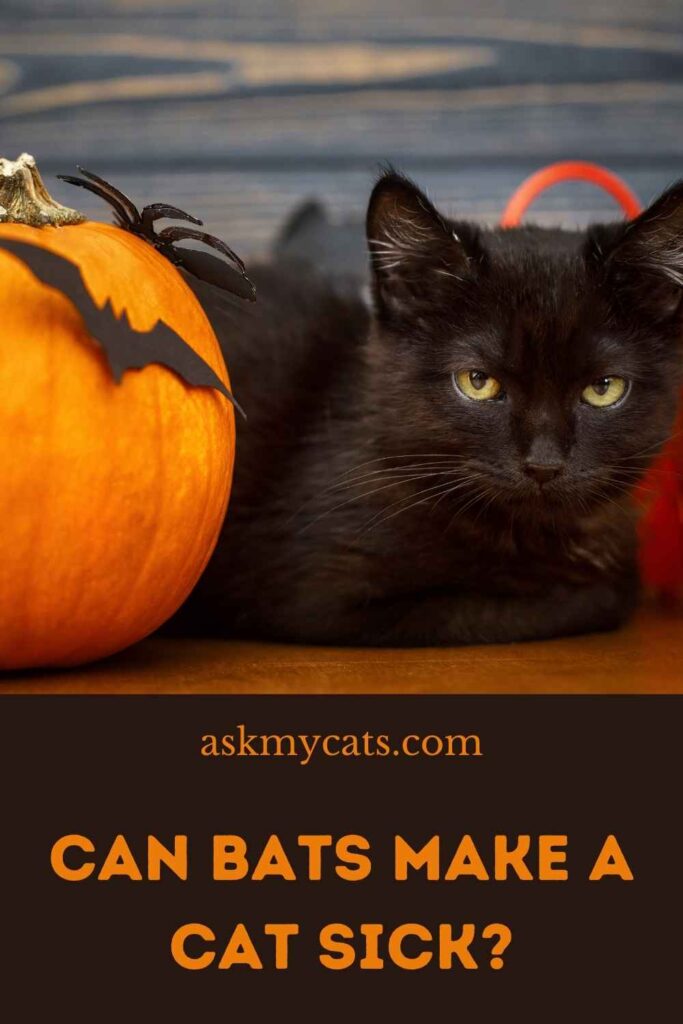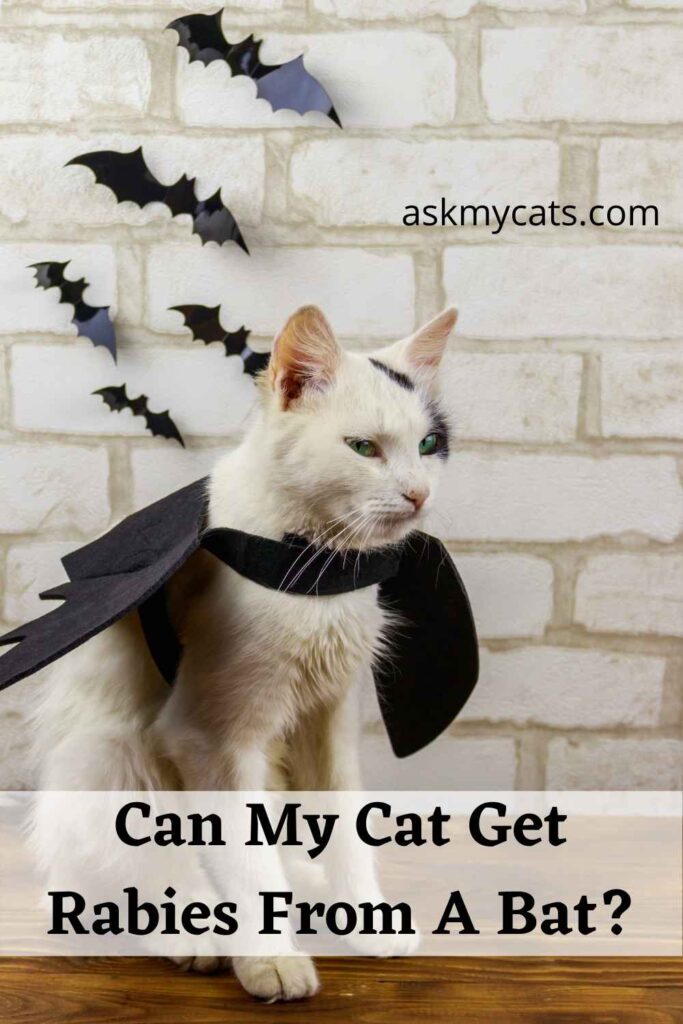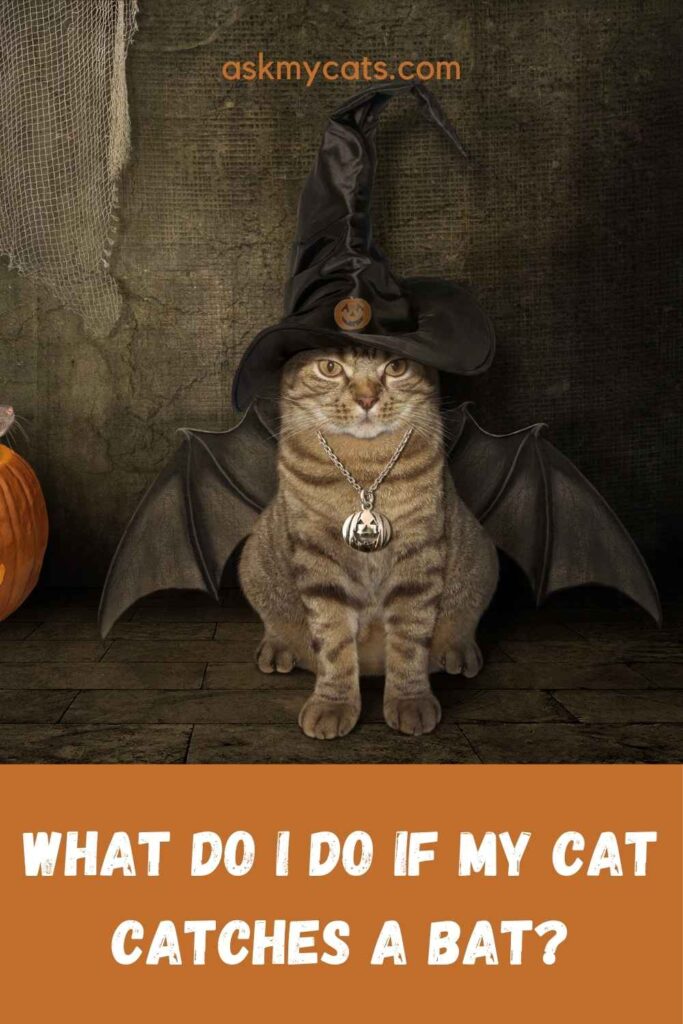While domestic cats are thought to have an effect on wild bird and small mammal populations, reported accounts of bat predation are either uncommon or anecdotal.…
Despite the fact that the majority of bats captured by cats were house-roosting, at least three of the 11 species affected were tree- or cave-roosting.
Cats can, in fact, eat bats. Though it doesn’t happen too often, a cat can eat a bat if the chance arises. Cats are carnivores and aren’t picky eaters, so they’ll eat everything. These two species rarely come into contact, but any cat will attack a bat on sight.
So what makes a bat a cat’s favourite meal? Cats eat bats in a variety of ways. Is it permissible for these wild animals to consume them?
Let us learn more about this.


Give Your Cat the Perfect Day
Get the Free Ebook!
Do Cats Attack Bats?
Cats can attack bats because while a bat isn’t a common food for cats, it doesn’t mean they can’t consume one.
Cats eat whatever is available to them, as well as anything they might catch on their own. Unfortunately, bats do not appear on either list.
And then, there are times when both animals can come into contact. When they do, a cat will go out of its way to catch it and eat it. This case has already occurred, and it has been confirmed.
Furthermore, bats aren’t very large mammals. When they stretch their wings, they seem to be giant beings.
A bat’s scale is comparable to that of rats and other mammals without their wings. As a result, bats are an ideal food for cats.
Let’s take a closer look at bats to see how they become cat food.
Where Do Bats Live?
Bats prefer to live in dark and quiet places where human interference is not common to avoid unnecessary disturbance.
Bats are the only species with the ability to fly.
Isn’t it fascinating?
They are the only animals capable of prolonged flight and their forelimbs double as wings. Bats have much superior manoeuvring skills than birds.
They are mammals because, unlike birds, they give birth and care for their young. Furthermore, instead of wings, they have fur.
Trees, houses, eaves, and rock crevices are their preferred sleeping spots. These creatures are nocturnal, which means they are most aggressive at night.
They sleep in dim places during the day, such as attics and caves, where there is little or no sun. They seldom come into contact with cats because of their lifestyle and climate. How are they going to become cat prey now?
Where Do Cats Find Bats?
Given their different lifestyles and environments, it’s a bit of a mystery how bats end up in a cat’s stomach.
When a bat enters a house or building during the night, it becomes a bat dinner for cats.
Bats occasionally make their way into houses and buildings, which is rare. In the summer, the attic or roof of a house or structure cools off at night and as a result, cold air from outside seeps in through cracks and openings.
Since they follow the air currents to the tight spots, these holes become bat guides. They use a house’s entrance as their living room until they discover one.
Bats usually sleep and hang out in the attic or in the walls of a house.
That’s when cats are most likely to see them.
How Does A Cat Hunt A Bat?
The cat will start hunting bats if it sees them hanging in the attic or on the walls.
About the fact that many house cats never learn to hunt like their wild counterparts, they can still kill a bat.
Before being a bird, either domestic or house cats come from a long line of hunters. As a result, they want to play with what they hope they should enjoy.
A bat resting in a building is easy prey for cats. They can climb high enough to scale steep walls, and they can easily navigate their way into the attic.
Bats are inactive throughout the day and can quickly slip into the lap of a playing cat.
Cats or Bats? Which Is Faster?
Though cats are known for their speed, a bat’s flight power will outrun them.
When chasing mice, an average house cat can sprint up to 30 miles per hour. Even then, a bat’s flight speed can reach 100 mph.
For cats chasing bats, though, speed is irrelevant. Bats that hang from the walls or in the attic are a popular prey for cats. As a result, a bat will collapse without escaping with a fast pounce and catch.
Cats are normally effective in their bat-hunting endeavours. A cat can fly high and far enough to grab a bat that can detect and attempt to flee.
Once it’s down, a cat will either eat it, or throw it out, or present it to its owner as normal.
Can Bats Make A Cat Sick?

Eating a bat may or may not have negative effects for cats.
Bats can make a cat sick because the rabies-carrying bat is well-known for spreading the deadly disease rabies.
As a result, many cat owners are concerned about their cats swallowing one if they see them doing so. Nonetheless, this isn’t completely accurate.
Just a few bats are rabies carriers. Rabies is carried by less than half of one percent of all bats.
Furthermore, bats, like any other rabies vector, can only transmit the disease by saliva.
A cat that eats an infected bat has a lower risk of contracting rabies than a cat that has been bitten.
And now, having the bat vaccinated for rabies is the only way to be positive.
How Do Bats Protect Themselves From Predators?
When it comes to defence, they just have their improved hearing and their wings to fall back on.
Bats don’t have a lot of predators to worry about, so they have to be extra cautious. They defend themselves by being able to control ultrasonic sounds.
Bats use ultrasonic sounds to navigate caves quickly, often in complete darkness. They will also do this to detect incoming predators.
And though, when a cat’s stamina is pitted against their long sleep, cats nearly always win.
Unbeknownst to anyone, a cat devouring a bat normally does no damage. The main danger is if the bat is rabid, which is very rare.
If the cat has been vaccinated against rabies, it should be well. If the problem persists, take your pet to the vet for a thorough examination.
Can My Cat Get Rabies From A Bat?
Since so many of our cats are kept indoors, bat touch poses the greatest rabies risk to our feline population.

Bats sometimes enter homes, where they are trapped, eaten, and played with by domestic cats.
Infected cats may contract the disease by biting or swallowing bats, or by being attacked by them.
Since most Ontario bats have tiny teeth, bite wounds are often ignored by owners and veterinarians.
Several bats in the Hamilton area test positive for rabies each year and there are certainly hundreds more in the wild.
Rabies is transmitted by contact with contaminated animals’ body fluids, such as blood and saliva.
The most prevalent mode of transmission is through bite wounds, but infection can occur from any contact with a rabid animal.
Rabies is present in a variety of wild animals in Ontario, including skunks, racoons, and bats. Rabies can infect cats, dogs, horses, and humans, among other domestic mammalian animals.
Bees, foxes, raccoons, and skunks will also transmit rabies to cats that go outside. Rabies-infected cats cannot exhibit symptoms for weeks, months, or even years after being exposed. The illness is quickly lethal until clinical symptoms appear.
Cats will infect humans and other animals for up to ten days before displaying symptoms. It is important to keep your cat’s rabies vaccine up to date for the welfare and well-being of both your cat and your pets.
Can Bats Hurt Cats?
Rabid bats are unpredictable and can attack and hurt your cute little pet anytime they wish.
Bats do not bite and are occasionally rabid, although they are rabies carriers. Bats pose a specific threat to pets, especially cats; your pets will chase the bats, and the bats will, of course, bite.
Our cat once caught a bat in mid-flight. He scooped the bat out of the air and put it in his mouth in a single, lightning-fast motion.
He was thankfully not bitten, although he could have definitely been. Furthermore, bat poop (or guano) is highly poisonous.
You should investigate several items to discourage bats from roosting in your attic. Since bats are a protected species by the Environmental Protection Agency (EPA), no pesticide can be used to deter bats from roosting.
When we found a bat roost in our attic, we contacted several exterminators as well as conservation and wildlife groups.
What Do I Do If My Cat Catches A Bat?
If your cat catches bat, make sure to test the bat and vaccinate your cat as early as possible.

Bats are well-known rabies carriers. While the chances of this bat having rabies are unlikely, they are not nil, and a rabid bat would be easier to catch than a safe bat.
Until proved otherwise, any interaction between an animal and animals in an environment where rabies is present is considered a potential rabies exposure. You would be able to do so only after having the bat checked.
All would be well if the bat is checked and found to be negative. If the test is positive, the vaccinated cat will need a rabies booster injection and will be monitored at home for 45 days.
The unvaccinated cat will have to be held under strict six-month quarantine or euthanized.
As a result, it’s obvious that the bat’s rabies condition and the cats’ vaccine status are critical.
Obtain the bat. You must keep hold of the bat while it is being checked. Allowing the cat to eat it or run away with it is not a good idea. Don’t leave it outside where it may be stolen by a human or an animal.
Put it in a jar or bottle so it won’t come into contact with you (e.g. use gloves or a scoop to pick it up). If the bat does not appear to be dead, proceed with caution, as an injured bat will appear to be dead but still be able to strike.
Some people consider putting mothballs in the attic, but mothballs are a toxic poison with a very powerful odour.
Mothballs are made from two different chemicals: naphthalene (also known as naphtha) and para-Dichlorobenzene (a form of benzene) (a poison that was used for removing stains).
If you want to keep bats away from your building, don’t use mothballs. The gases irritate the lungs and are particularly dangerous to children and pets.
Frequently Asked Questions
Do cats keep bats away?
Bats are a natural insecticide that is both safe and environmentally friendly. Bats do not bite and are occasionally rabid, although they are rabies carriers. Bats pose a specific threat to pets, especially cats; your pets will chase the bats, and the bats will, of course, bite. Our cat once caught a bat in mid-flight.
What animals will eat bats?
Bats have few natural predators, and one of the most serious threats is disease. Bats are eaten by owls, hawks, and mice, but it’s nothing compared to the millions of bats killed by White-Nose Syndrome.
Are bats afraid of cats?
Cats should not frighten bats. Rats let bats nervous (and alligators). When a bat takes a drink of water, he is afraid of being grabbed by an alligator as he swoops down low over the water to get a short taste. Cats should not frighten bats.
Final Words
Bats are eaten by cats. Although these two species seldom come into contact, any cat would gladly accept a bat. While a bat is an unlikely prey for cats, this does not rule out the possibility of them eating one.
Bats like dark environments, but they may also make their way into homes. That’s when cats are most likely to discover them. A cat goes for a bat that is resting or hanging in the walls or attic of a home. It can hop far enough to hit a sleeping bat and catch it.
Cats are faster than bats, and they kill the bats that are sleeping. As a result, bats are often captured and eaten by cats. Most pet owners are afraid of contracting rabies after eating bats. It’s not accurate that only a small percentage of bats are rabid.
When a cat eats a bat, there isn’t much danger, particularly if it’s been vaccinated against rabies. Bats can be eaten by mammals, reptiles, and insects in addition to cats.
If you enjoy this article, don’t forget to leave a thumbs up in the comments section below!

Admit it, you came here after reading a certain phrase from “Alice in Wonderland” it’s ok if you did 😉